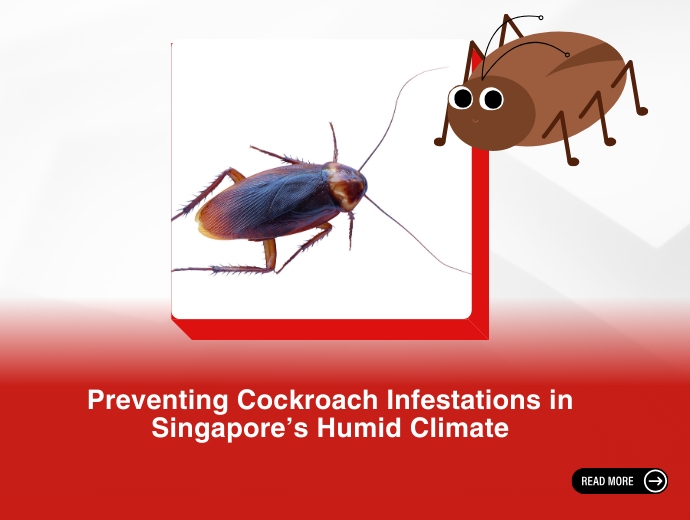Rowdy Rodent Rumpus: Are We Approaching Singapore's Rat Infestation Right? (YES)
Here’s a picture for you.
House mice, the little rodents that you often find lurking around the corners of your homes, are prolific breeders. So much so that theoretically speaking, if they’re left without human intervention and with no predators around, merely two mice can grow to 2 million within just 2 years! Clearly, that’s Two Many! (pun intended)
With that thought, think of the devastation that can unfold without proper rodent control in place. Recently, Singapore’s Ministry of Sustainability and the Environment (MSE) announced that it is trialing the use of thermal imaging cameras for rat surveillance in outdoor back-lane areas. This decision was made in light of the growing rat infestation in Singapore - a glaring issue that many pest firms have attested to. Many pest firms have also confirmed a 15-20% increase in infestations since last year. While the trials may look like a step in the right direction, practical concerns related to the execution of this strategy remain unresolved. Good on paper, using infrared and AI raises issues of power consumption and operational feasibility. Moreover, what would happen once these clever rodents adapt to this tech?
We feel that the bigger question to address is whether we are approaching Singapore's rat infestation in the right way.
To find the answer to that, it is essential to examine the causes and contributing factors. Rapid urbanization and population growth have led to increased construction activities, which disrupt the natural habitats of rats. Additionally, improper waste management and the availability of food sources in residential areas have also contributed to the problem. These factors create an ideal environment for rats to thrive and multiply. Evidently, the problem runs deeper than what meets the eye.
While there’s no denying that Singapore has deployed relevant technology and implemented various rat control methods to address the infestation, the overall effectiveness of these methods needs to be evaluated. We can always learn from rodent eradication projects in New South Wales and conservation efforts in Rakiura which integrated detection dogs into its rodent control strategies. Under them, trained canines aided in detecting rodents in diverse environments, complementing existing methods and enhancing early intervention capabilities.
However, we must acknowledge that from thermal imaging to canine detection, standalone efforts cannot yield results. Rather, a holistic and radical approach is the need of the hour.
Singapore needs a program that focuses on a combination of methods, including community engagement, improved waste management, and targeted use of rodenticides. In fact, a good place is by studying and adapting successful strategies from other cities. For instance, Brookline had introduced a Rodent Control Action Plan back in October 2022 due to a significant increase in rodent sightings reported to the Department of Public Works and Department of Public Health and Human Services, with a more than 300% rise from 2019 to mid-2022. The plan focused on pest management through short, mid, and long-term steps for improvement.
These steps included enhancing interdepartmental cooperation, utilizing SMART boxes, collaborating with food safety consultants, establishing a centralized website for rodent sightings, educating residents and businesses, reviewing solid waste regulations, and purchasing five Big Belly trash compactors. Within 4 months, the city witnessed nearly 300 catches proving the effectiveness of a comprehensive approach. Similar approaches have also been implemented in other cities such as Somerville and Cambridge.
So, what would a comprehensive plan look like?
Comprehensive Plan for Tackling Rodent Infestation in Singapore
To effectively address this issue, a holistic and comprehensive plan is essential, integrating rodent control into broader urban planning and environmental management frameworks. This would include:
- Redesigning Urban Spaces:
- Identify and redesign areas prone to rodent infestation to minimize hiding spots.
- Implement urban planning strategies that discourage rodent habitats, such as reducing cluttered areas and optimizing green spaces.
- Sustainable Waste Management Practices:
- Develop and implement sustainable waste management practices to reduce food sources for rodents.
- Enhance waste collection and disposal systems to minimize opportunities for rodent infestation.
- Community Awareness and Participation:
- Launch educational campaigns to raise awareness about rodent infestation and its impacts on public health.
- Foster community participation in pest control efforts through citizen engagement and collaboration with local authorities.
- Embracing Innovative Solutions:
- Invest in innovative technologies, such as infrared cameras and AI, to enhance rodent monitoring and control efforts.
- Explore eco-friendly pest control methods, such as biological control agents, to complement traditional rodenticides.
- Challenging Conventional Methods:
- Evaluate the effectiveness of existing rodent control methods and identify areas for improvement.
- Encourage experimentation with alternative approaches and adapt solutions based on real-time data and feedback.
Finding a sustainable solution to Singapore's rat infestation
The rat infestation in Singapore is a complex issue that requires a multi-faceted approach. It is essential to address the root causes of the problem, such as urbanization and improper waste management. By implementing comprehensive rat control programs, raising public awareness, and engaging the expertise of pest control services, Singapore can make significant progress in managing rat infestation. It is crucial to find a sustainable solution that not only reduces the rat population but also prevents future infestations. If you are looking to tackle your rodent woes more comprehensively, reach out to ORIGIN.






.png)
